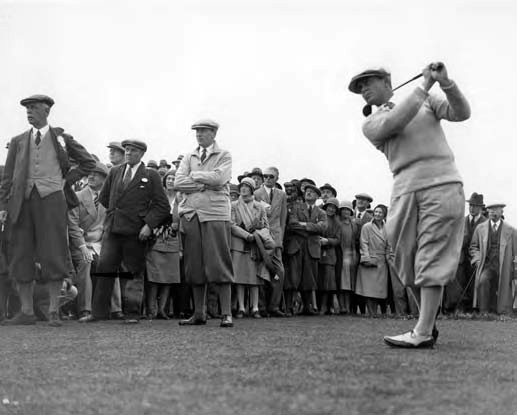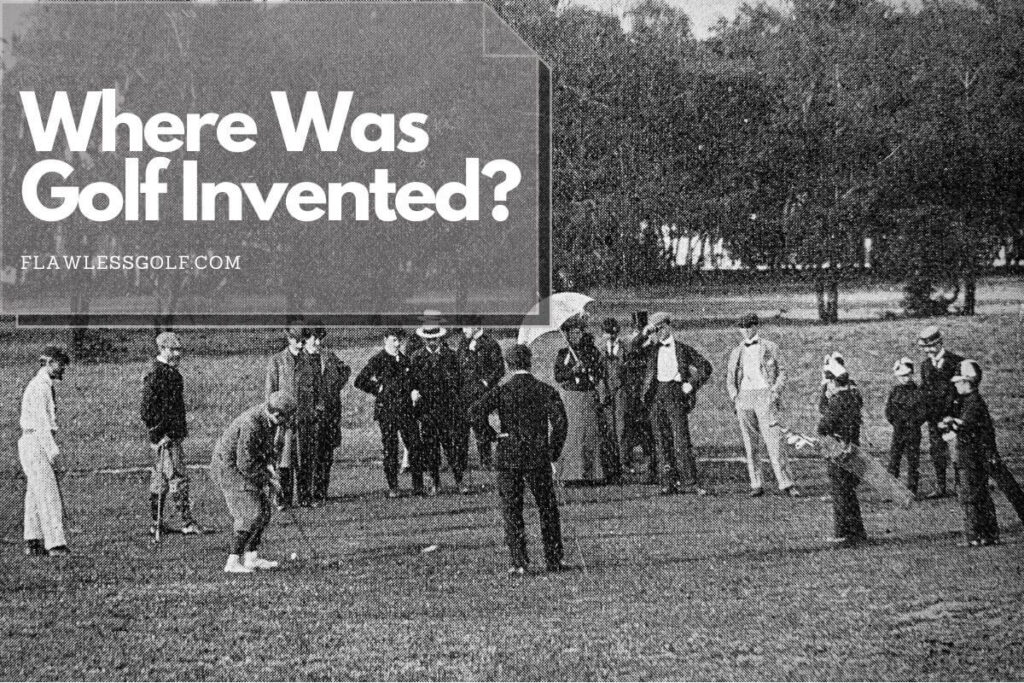No single person is credited with developing the game of golf. For a game strictly defined by rules, even the exact location of its beginnings is somewhat murky. But where exactly did it originate from? Here is what you should know.
Table of Contents
Where Was Golf Invented?
Countries such as France, China, and Holland have all laid claim to inventing the sport, but it is Scotland, a country of some 5 million people, that is universally looked upon as the birth place of golf.
According to the United States Golf Association, “Some scholars suggest that the Dutch game of kolf, played with a stick and ball on frozen canals in the wintertime, was brought by Dutch sailors to the east coast of Scotland (in the 14th or 15th century), where it was transferred to the public linkslands and eventually became the game known today.”
Indeed, no country is more proudly associated with the sport than Scotland, where you will find some of the finest courses in the world, including the famed Old Course in the town of St. Andrews, where golf has been played since at least the 16th century.
The first official rules of golf were formed in 1744 an hour south in Edinburgh, and the St. Andrews Society of Golfers (now known as the Royal & Ancient Golf Club, whose imposing clubhouse overlooks the Old Course) was founded a decade later.
Golf Reaches The United States
Scottish and British golf professionals traveled to the United States in the late 1800s, bringing with them an intimate knowledge of the game along with course-building skills. The first official club named St. Andrew’s Golf Club, naturally was formed in Yonkers, New York, in 1888.
The St. Andrews clubhouse and Swilcan Bridge.

The United States Golf Association, founded in 1894, is based in Far Hills, New Jersey, and runs numerous national championships for amateur and professional golfers of all ages, oversees the game’s rules (in conjunction with the Royal & Ancient Golf Club), and coordinates the handicap system.
One year after its formation, the first 18-hole course in the United States, called the Chicago Golf Club, opened. As the game’s popularity began to grow, the Professional Golfers Association of America was formed in 1916, while the Ladies Professional Golf Association was formed in 1950.
As cities and towns sprouted in the west and suburban sprawl started tooccur around major metropolitan areas, golf course construction increased as well. Private country clubs were built for therich and famous, while affordably priced municipal courses provided outlets for less affluent golfers.
Historical Players Who Contributed To The Development Of Golf
Legendary players contributed to the growth of the game in America during the 20th century, drawing a share of the public’s attention from more established sports such as baseball, basketball, and football. When 20-year-old amateur Francis Ouimet won the 1913 U.S.
Open at the Country Club in Brookline, Massachusetts, he became the first star in American golf circles. The many wins of Bobby Jones dominated the sports headlines in the 1920s and 1930s, followed by Byron Nelson, Sam Snead, and Ben Hogan in the 1940s and 1950s.

Bobby Jones Photo
The introduction of the highly personable Arnold Palmer took the game to a whole new level of popularity in the 1960s, with his devoted fans forming “Arnie’s Army.”
He soon found competition from an Ohio youngster named Jack Nicklaus (and nicknamed the “Golden Bear”), who would go on to compile the greatest winning record in the history of the game.
Those records are now firmly in the sights of Tiger Woods, who started playing golf at the age of three and won his first major professional tournament, the Masters, in 1997 at the mere age of 21.
On the women’s side, the cast of stars is no less grand. The all-around athlete Babe Didrikson Zaharias drew plenty of attention with her tournament wins in the late 1940s and into the 1950s, followed by superb players like Patty Berg, Louise Suggs, Mickey Wright, and Kathy Whitworth.
The success of Nancy Lopez in the late 1970s reignited interest in the women’s game, while Annika Sorenstam from Sweden is universally acclaimed as the world’s best female golfer from the 1990s and into the 21st century.
The course design business has featured increasingly well-known professionals as well, with architects like Robert Trent Jones, Sr. (whose sons Rees and Robert, Jr., are highly regarded today), a dominant figure for almost five decades.
The 1980s and 1990s marked a golf construction boom, with modern course designers like Pete Dye, Tom Fazio, Jack Nicklaus, and Tom Doak all leaving their mark with layouts in every corner of the United States, just like their Scottish and British counterparts did nearly a century before.
Television helped introduce the game to a national audience. In 1953, television helped introduce the game to a national audience when the first broadcast of a tournament to the entire country. Today, a whole cable television channel (appropriately named the Golf Channel) is devoted to the sport.
The Evolution Of Golf Equipment
Equipment used to play the game has evolved over time into a huge business. In 2002, golfers spent $4.7 billion on equipment (clubs, balls, bags, gloves, shoes, etc.), according to the National Golf Foundation.
The biggest change that came about during the 1980s was the introduction of metal woods. Technological advances continue today, resulting in lighter and more forgiving clubs along with balls that travel farther than ever before, all designed to help people enjoy a game that started on frozen ponds in one small country and is now played in every part of the world.



